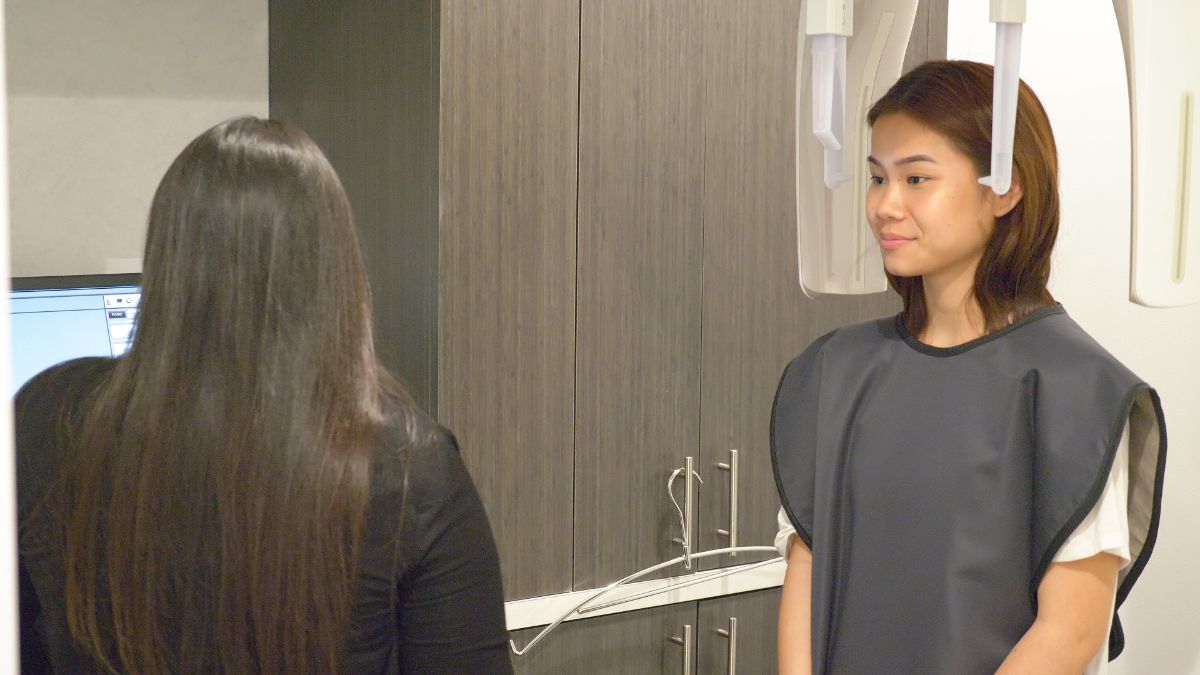Here at McGrory Orthodontics, we’re able to treat a wide variety of oral issues with braces, aligners, and other orthodontic appliances. However, we do occasionally come across a case that cannot be successfully corrected using more conventional solutions. That’s where surgical orthodontics comes in! Also referred to as orthognathic surgery or corrective jaw surgery, this treatment option allows us to correct abnormalities of the jaws, teeth, and facial bones. These abnormalities can interfere with many everyday activities, including chewing and talking properly. They may also lead to snoring, sleep apnea, headaches, and persistent TMJ pain.
Corrective jaw surgery can not only treat these issues but will often improve the overall appearance of a patient’s facial profile as well, particularly when it’s paired with orthodontic treatment. While the latest advances in orthodontics mean that corrective jaw surgery may not even be necessary for some patients, it can still be a helpful option in certain cases. When you schedule your FREE consultation with our Bellaire or Pearland office, our doctors will be able to determine if surgical orthodontics is the right treatment option for you and your specific needs.
Who is a good candidate for surgical orthodontics?
Because our jaws grow gradually throughout childhood and adolescence, there are times when the upper and lower jaws end up growing at different rates, causing them to be misaligned. Injury to the jaw can also affect jaw alignment, along with birth defects. As we noted briefly above, serious misalignment may result in a number of issues that can affect everything from how a patient chews and speaks to their overall oral health and appearance.
Whatever the underlying cause may be, misalignment can cause several functional and aesthetic problems for patients. In more severe cases, orthognathic surgery may be recommended in order to move the jaw and teeth into the correct positions. Surgical orthodontics are also used to fix aesthetic concerns with the size and shape of the jaw, or the facial profile.
If you’ve experienced any of the following symptoms, an orthodontic evaluation with one of our experienced orthodontists is a great place to start!
- Difficulty when chewing, biting, or swallowing
- Problems with your speech
- Chronic jaw or TMJ pain
- Open bite
- Protruding jaw
- Breathing problems
- Snoring or sleep apnea
This type of orthodontic work involves correcting the alignment of your jaw, so it’s likely that your teeth will experience some shifting as a result. This is why we’ll often use braces of clear aligner therapy in conjunction with the corrective jaw surgery.
Generally speaking, we’ll want to wait until the jaw is done growing before making a decision on using surgical orthodontics. This usually happens between the ages of 16 and 18. If your jaw growth is already complete, one of our doctors will be able to evaluate your jaws, teeth, and gums to determine if surgery would be the best course of action for your particular case.
What to expect from surgical orthodontics
Surgical orthodontics includes a pre- and post-surgical phase, with each phase being tailored to the patient’s unique needs and jaw structure. In the pre-surgery phase, we will often work towards aligning the teeth and moving them into more desirable positions. This can be achieved by using an orthodontic appliance on the teeth for 12-18 months before surgery.
The actual surgical procedure can be performed on the upper or lower jaw. Corrective surgery on the upper jaw can shift it backward, forward, upward, and downward, while surgery on the lower jaw will shift it forward or backward. Everything takes place inside the mouth, so there is no visible facial scarring. Cuts are made in the jawbone itself which is then moved into the correct position. The surgeon will use very small bone plates, screws, wires, and rubber bands to hold the jawbone in the newly aligned position. In some cases, extra bone may be added to the jaw from your hip, leg, or rib. Any extra bone is also secured with screws and plates.
While complete healing can take up to twelve weeks, there will usually be quite a bit of initial healing by about six weeks post-surgery. Most patients will need to wait about two weeks before resuming their normal daily activities and can expect to be in braces or aligners for roughly 6-12 months after the surgery takes place. Depending on the severity of the issue and what adjustments are needed, the entire process may take place over many months or even years.
When we successfully use surgical orthodontics to treat a patient’s significant needs, it can lead to a more balanced facial appearance and improved functionality overall. Sleeping, eating, and chewing properly becomes an easier task, and there will often be a noticeable improvement in speech impediments. Many patients will experience a big boost to their self-esteem, too!
Find a healthier, straighter smile at McGrory Orthodontics
At McGrory Orthodontics, we’re known for offering a wide variety of treatment options for patients of all ages in Pearland, Bellaire, and the surrounding communities. Our expert team of experienced professionals will work with you to find the best solution to your orthodontic needs, whether it’s traditional treatment with braces or aligners or something as involved as orthognathic surgery.
If you or your child have had any trouble with eating, breathing, or swallowing, or have any additional signs of a misaligned jaw, get in touch with us today to schedule your complimentary consultation! We’ll always take the time to ensure you’re fully informed about the best way to straighten your smile and are happy to answer any questions you may have about surgical orthodontics.



